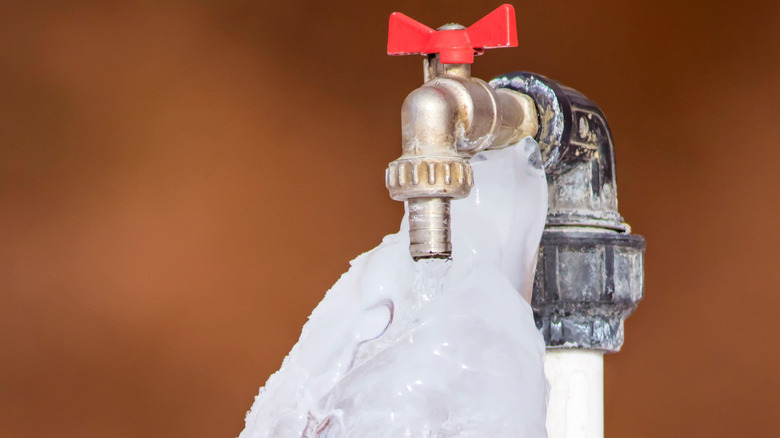Advice for Preventing Frozen Pipes in Cold Weather: Specialist Insights
Advice for Preventing Frozen Pipes in Cold Weather: Specialist Insights
Blog Article
What are your thoughts and feelings on How to prepare your home plumbing for winter weather?

Winter can damage your plumbing, specifically by freezing pipes. Below's exactly how to stop it from happening and what to do if it does.
Intro
As temperatures decline, the risk of frozen pipes boosts, possibly leading to costly repairs and water damages. Recognizing exactly how to avoid frozen pipelines is essential for home owners in cold climates.
Comprehending Icy Pipelines
What causes pipes to ice up?
Pipes freeze when subjected to temperature levels listed below 32 ° F (0 ° C) for expanded durations. As water inside the pipelines ices up, it increases, taxing the pipe walls and potentially causing them to rupture.
Risks and problems
Frozen pipelines can cause supply of water interruptions, home damages, and costly repairs. Burst pipelines can flood homes and trigger considerable structural damages.
Signs of Frozen Piping
Identifying frozen pipelines early can stop them from bursting.
Exactly how to recognize icy pipes
Search for reduced water circulation from faucets, unusual odors or noises from pipelines, and noticeable frost on revealed pipelines.
Prevention Tips
Insulating vulnerable pipes
Wrap pipelines in insulation sleeves or utilize warmth tape to safeguard them from freezing temperature levels. Concentrate on pipelines in unheated or external locations of the home.
Heating methods
Keep interior areas adequately warmed, especially locations with pipes. Open up cabinet doors to permit warm air to distribute around pipelines under sinks.
Protecting Exterior Pipes
Yard tubes and exterior taps
Separate and drain pipes yard pipes before winter season. Mount frost-proof faucets or cover outside faucets with insulated caps.
What to Do If Your Pipelines Freeze
Immediate activities to take
If you presume frozen pipelines, maintain faucets open to eliminate pressure as the ice melts. Make use of a hairdryer or towels soaked in warm water to thaw pipes slowly.
Long-Term Solutions
Architectural adjustments
Take into consideration rerouting pipelines away from outside walls or unheated locations. Add additional insulation to attics, basements, and crawl spaces.
Updating insulation
Purchase high-quality insulation for pipes, attic rooms, and wall surfaces. Proper insulation assists keep consistent temperature levels and lowers the risk of frozen pipelines.
Verdict
Avoiding icy pipes requires positive procedures and fast responses. By understanding the causes, signs, and preventive measures, house owners can protect their plumbing during cold weather.
5 Ways to Prevent Frozen Pipes
Drain Outdoor Faucets and Disconnect Hoses
First, close the shut-off valve that controls the flow of water in the pipe to your outdoor faucet. Then, head outside to disconnect and drain your hose and open the outdoor faucet to allow the water to completely drain out of the line. Turn off the faucet when done. Finally, head back to the shut-off valve and drain the remaining water inside the pipe into a bucket or container. Additionally, if you have a home irrigation system, you should consider hiring an expert to clear the system of water each year.
Insulate Pipes
One of the best and most cost-effective methods for preventing frozen water pipes is to wrap your pipes with insulation. This is especially important for areas in your home that aren’t exposed to heat, such as an attic. We suggest using foam sleeves, which can typically be found at your local hardware store.
Keep Heat Running at 65
Your pipes are located inside your walls, and the temperature there is much colder than the rest of the house. To prevent your pipes from freezing, The Insurance Information Institute suggests that you keep your home heated to at least 65 degrees, even when traveling. You may want to invest in smart devices that can keep an eye on the temperature in your home while you’re away.
Leave Water Dripping
Moving water — even a small trickle — can prevent ice from forming inside your pipes. When freezing temps are imminent, start a drip of water from all faucets that serve exposed pipes. Leaving a few faucets running will also help relieve pressure inside the pipes and help prevent a rupture if the water inside freezes.
Open Cupboard Doors
Warm your kitchen and bathroom pipes by opening cupboards and vanities. You should also leave your interior doors ajar to help warm air circulate evenly throughout your home.

I'm certainly very serious about Prevent Frozen Pipes and I am hoping you liked the new piece. Are you aware of somebody who is truly interested in Helpful Tips to Prevent Frozen Pipes this Winter? Feel free to share it. I cherish reading our article about How to prepare your home plumbing for winter weather.
View Website Report this page